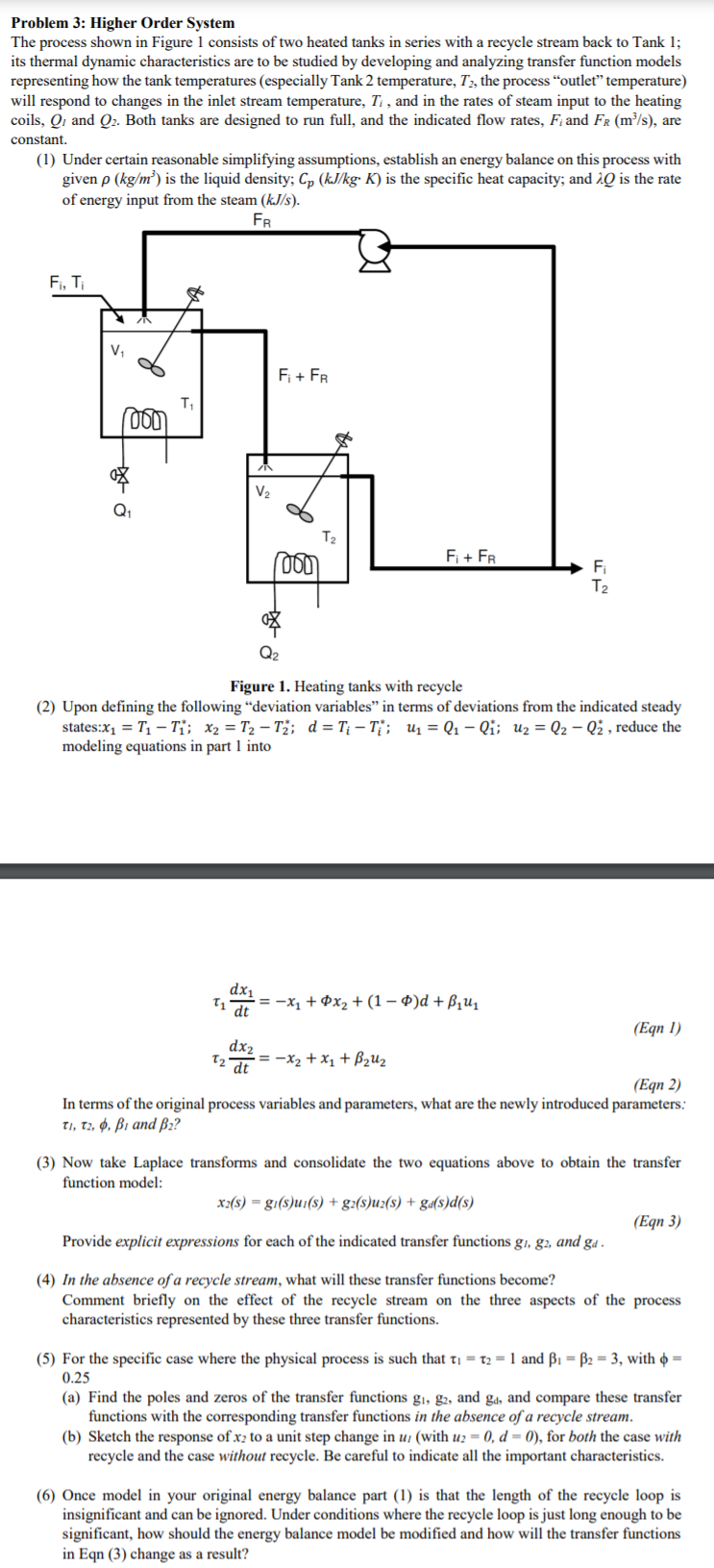
Problem 3: Higher Order System The process shown in Figure 1 consists of two heated tanks in series with a recycle stream back to Tank 1; its thermal dynamic characteristics are to be studied by developing and analyzing transfer function models representing how the tank temperatures (especially Tank 2 temperature, T2, the process "outlet" temperature) will respond to changes in the inlet stream temperature, Ti, and in the rates of steam input to the heating coils, Q and Q2. Both tanks are designed to run full, and the indicated flow rates, F and Fr (m/s), are constant. (1) Under certain reasonable simplifying assumptions, establish an energy balance on this process with given p (kg/m?) is the liquid density; Cp (kJ/kg. K) is the specific heat capacity; and 2Q is the rate of energy input from the steam (kJ/s). FR Fi, T Fi + FR 000 V Q T2 000 Fi + FR Fi T2 Figure 1. Heating tanks with recycle (2) Upon defining the following "deviation variables" in terms of deviations from the indicated steady states:x = T1 - T1; X2 = T2 - T; d = Ti-T; U = Q1-Qi; uz = Q2 - Q2 , reduce the modeling equations in part 1 into T1 dx1 = -x1 + x2 + (1 - 0)d + B, un (Eqn 1) dx2 T2 = -x2 + x1 + B2u2 dt (Eqn 2) In terms of the original process variables and parameters, what are the newly introduced parameters: T1, T2, 6, B1 and B2? (3) Now take Laplace transforms and consolidate the two equations above to obtain the transfer function model: x2(S) = g(s)u() + ga(s)uz(s) + ga(s)d(s) (Eqn 3) Provide explicit expressions for each of the indicated transfer functions gi, g2, and ga. (4) In the absence of a recycle stream, what will these transfer functions become? Comment briefly on the effect of the recycle stream on the three aspects of the process characteristics represented by these three transfer functions. (5) For the specific case where the physical process is such that Ti = T2 = 1 and B = B2 = 3, with 6 = 0.25 (a) Find the poles and zeros of the transfer functions gi, g2, and gd, and compare these transfer functions with the corresponding transfer functions in the absence of a recycle stream. (b) Sketch the response of x2 to a unit step change in us (with u2 = 0, d = 0), for both the case with recycle and the case without recycle. Be careful to indicate all the important characteristics. (6) Once model in your original energy balance part (1) is that the length of the recycle loop is insignificant and can be ignored. Under conditions where the recycle loop is just long enough to be significant, how should the energy balance model be modified and how will the transfer functions in Eqn (3) change as a result







